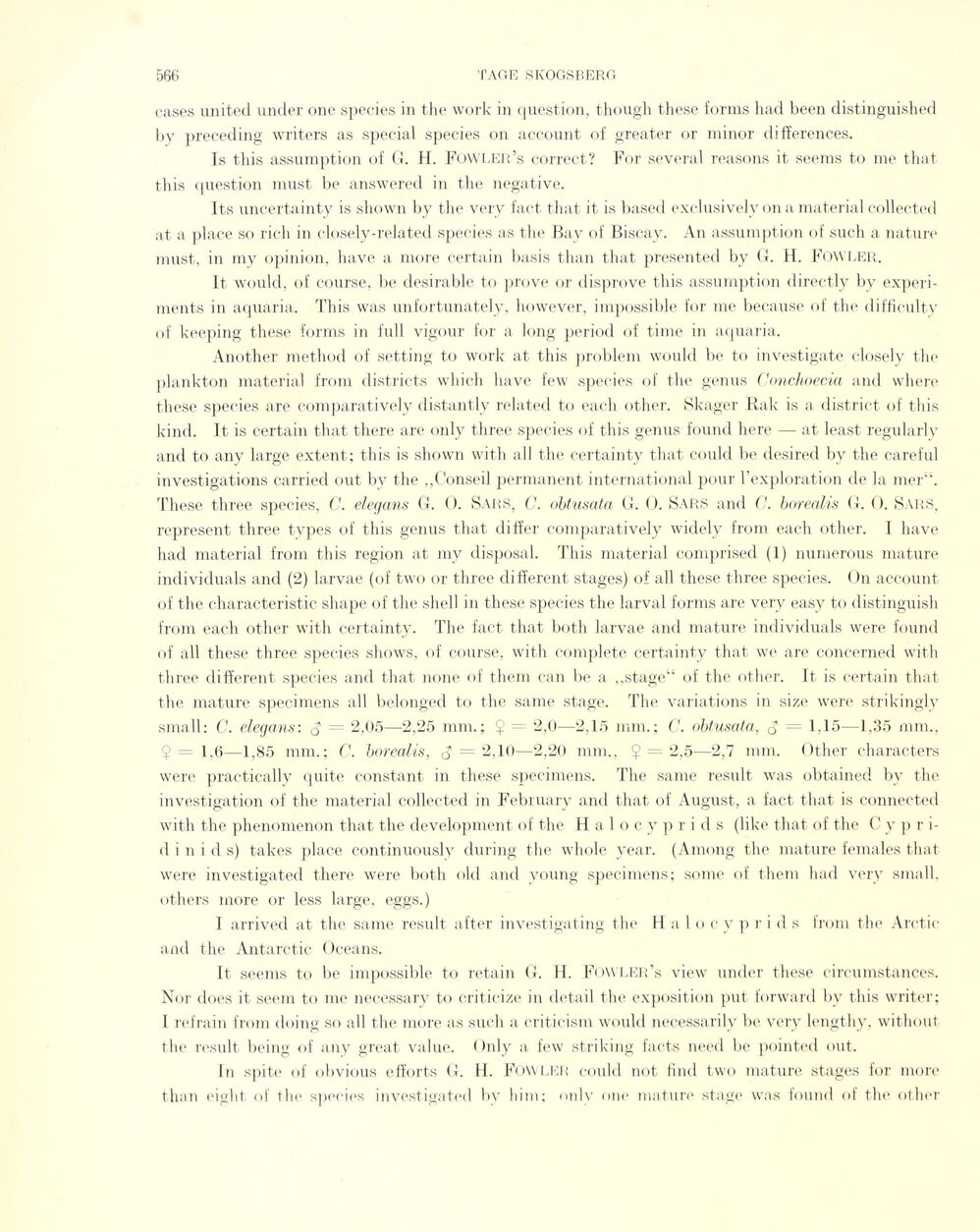
Full resolution (JPEG) - On this page / på denna sida - Sidor ...

<< prev. page << föreg. sida << >> nästa sida >> next page >>
Below is the raw OCR text
from the above scanned image.
Do you see an error? Proofread the page now!
Här nedan syns maskintolkade texten från faksimilbilden ovan.
Ser du något fel? Korrekturläs sidan nu!
This page has never been proofread. / Denna sida har aldrig korrekturlästs.
cases united under one species in the work in question, thougli these forms had been distinguished
by preceding writers as special species on aceount of greater or minor differences.
Is this assumption of CI. H. FOWLER’s correct? For several reasons it seems to me that
this question must be answered in the negative.
Its uncertainty is shown by the very faet that it is based exelusively on a material collected
at a place so rieh in closely-related species as the Bay of Biscay. An assumption of such a nature
must, in my opinion, have a more certain basis than that presented by G. H. Fowler.
It would, of course, be desirable to prove or disprove this assumption directly by
experiments in aquaria. This was unfortunately, however, impossible for me because of the difficultv
of keeping these forms in füll vigour for a long period of time in aquaria.
Another method of setting to work at this problem would be to investigate closely the
plankton material from districts which have few species of the genus Conchoecia and where
these species are comparatively distantly related to each other. Skager Rak is a district of this
kind. It is certain that there are only three species of this genus found liere — at least regularly
and to any large extent; this is shown with all the certainty that could be desired by the careful
investigations carried out by the „Conseil permanent international pour l’exploration de la mer“.
These three species, C. elegans G. O. Sars, C. obtusata G. C). SARS and C. borealis G. O. Sars,
represent three types of this genus that differ comparatively widely from each other. I have
had material from this region at my disposai. This material comprised (1) numerous mature
individuals and (2) larvae (of two or three different stages) of all these three species. On account
of the characteristic shape of the shell in these species the larval forms are very easy to distinguish
from each other with certainty. The faet that both larvae and mature individuals were found
of all these three species shows, of course, with complete certainty that we are concerned with
three different species and that none of them can be a „stage“ of the other. It is certain that
the mature specimens all belonged to the same stage. The variations in size were strikingly
small: C. elegans: J = 2,05—2,25 mm.; $ = 2,0—2.15 mm.; C. obtusata, d = 1-15—1,35 mm.,
$ = 1.6—1.85 mm.; C. borealis, = 2,10—2,20 mm., $-2,5—2,7 mm. Other charaeters
were practically quite constant in these specimens. The same result was obtained by the
investigation of the material collected in February and that of August, a faet that is connected
with the phenomenon that the development of the Halocyprids (like that of the C y p
ridi n i d s) takes place continuously during the whole year. (Among the mature females that
were investigated there were both old and young specimens; some of them had very small,
others more or less large, eggs.)
I arrived at the same result after investigating the H aloe y prid s from the Arctic
and the Antarctic Oceans.
It seems to be impossible to retain G. H. FOVVLER’s view under these circumstances.
Nor does it seem to me necessary to critieize in detail the exposition put forward by this writer;
l refrain from doing so all the more as such a criticism would necessarily be very lengthy, without
the result being of any great value. Only a few stri king facts need be pointed out.
In spite of obvious efforts G. H. Fowler could not find two mature stages for more
than eight of the species investigated by him; only one mature stage was found of the other
<< prev. page << föreg. sida << >> nästa sida >> next page >>